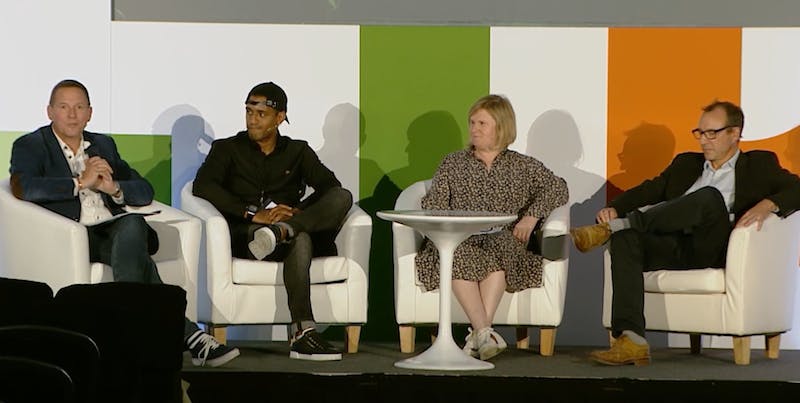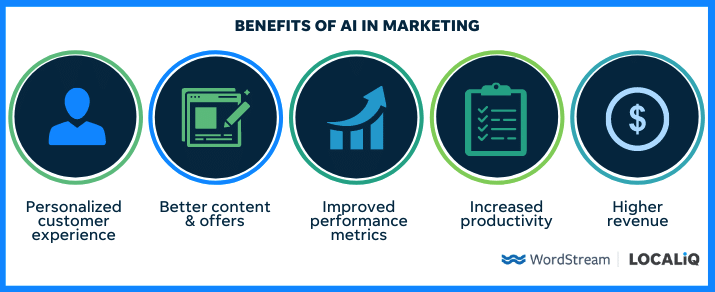
Here’s a run-down of the trends that the experts think will disrupt and shape the industry.
“Let’s look at the definitions, how we do it and who our consumers are… because I am a consumer.”
“There is a massive difference in opinion between what marketeers believe they are offering their customers and ultimately what they are,” says Edwards. “I think if we are to deliver unconscious commerce, we have to overcome a little sense of arrogance and complacency and the ways that we can do that.”
Putting the person before the cart
The question, naturally, is, “how do you win as a brand in the marketplace world?” Edwards returns back to the point about people not looking for brand, as such, but instead looking for products, “or pragmatic solutions to problems.”
Christopher Kenna, Founder & CEO of Brand Advance, a media network that helps advertisers reach diverse communities; Fiona Gordon, CEO of Ogilvy UK; and Pete Edwards, CEO of Spark Foundry, all shared their predictions.
“We knew that was what people wanted,” says Gordon. “People had different price points and people they had to gift for, so the whole notion of ‘bootiques’ was about understanding that you might be buying for someone who is 100% vegan and you’re completely clueless, or you might be buying for a family member who loves sport but you don’t.”
Gordon also highlights recent research which found that more than half of 18 to 34-year-olds would rather go to a garden centre than to a nightclub. “Are we recognising that opportunity in terms of where those people are?” asks Gordon. “We’ve seen great mash-ups between brands in the last few months, but if your own brand doesn’t have the credibility to do something, can you do a tech mash up or another brand partnership to get that blend between life, home, and work?”
In reference to Ogilvy UK’s ‘Bootique’ campaign for Boots , Gordon says “it was really about ‘how do we show up in a way that really helps people’?” The conclusion was to make the experience of buying the perfect gift at Christmas as easy as possible.
Seamless shoppability
“I think we can all hold our hands up to… the same kind of marketing,” he says, “the same groups of people that we’re targeting, [it] has been done over and over, yet we’ll stand on stages at Expo, or Cannes, or AdWeek, and say we are going to do things differently and reach more of our potential consumers.”
When it comes to what consumers want, Pete Edwards, CEO of Spark Foundry, says ease and convenience is the ultimate priority. As a result, he predicts a continued trend towards ‘unconscious commerce’, saying, “the desire of the consumer is just to make everything so much simpler and easier that it becomes practically invisible.”
Interestingly, however, Edwards says that it is possible to go further, making the statement that the ultimate frictionless purchase is voice. “I think, in the next two to three years, all of us will be doing so much more with voice,” he says, “and that’s where truly unconscious purchase happens, especially if you’ve got a shopping list and you’ve run out of tea bags, you just say “more Yorkshire tea please.” It’s that level of simplicity of purchase that’s going to change.”
“So you have to have, as a brand, a visible space to make your presence meaningful. Make it personalised and make it relevant, otherwise you’ll suffer. From the marketplace perspective, recognise that it is going to grow, but make sure your brand is powered, famous, wanted, relevant, and then use data to power that conversation.”
Unconscious commerce
“So we can push back to clients and say, ok, you think this is what your key consumer is, but we’ve been using the same definitions for the last 20 years – ABC1, tech-savvy – actually does that work for an Indian or black family, or LGBTQ+ or same-sex couple?”
Alongside blanket or biased targeting, Kenna also highlights an industry tendency to attach buzzwords to certain target groups. “If you’re speaking to ‘black, gay Chris Kenna’ it’s called ‘culture marketing’ but if you’re speaking to anyone else its called ‘marketing’. But isn’t marketing just making sure that ‘black, gay Chris Kenna’ wants to buy whatever the product is as much as anyone else?” he asks.
On a similar theme, Gordon also highlights the “life, work, and home blend or blur” that we’ve all lived through in the past 18 months as a big opportunity for brand marketers.
“What has happened in the last year is that everything is intersecting… we’ve all streamed what would have been Oscar movies at home, while we’re on the Brewdog online pub, while we’re getting a Deliveroo from Sainsbury’s in 30 minutes,” she says.
At Ecommerce Expo last week, Richard Robinson, MD of Xeim Engage and Oystercatchers, chaired a panel of agency CEOs and asked them what they see in the future of marketing and ecommerce.
Winning in a world of marketplaces
Finally, Edwards cites another rising trend that he predicts will become even more crucial to ecommerce strategies going forward: marketplaces.
For more on the future of ecommerce, see our Econsultancy Live content hub.
Edwards references B&Q as an example of a brand that executes ultra convenience for customers. “B&Q created 8,000 SKUs that you could buy the day before to be click-and-collected at a local shop the following day,” he explains. “Now that level of agility and speed makes shopping easier.”
“People are there to do the task at hand, whether that’s doing the shop quickly (because the kids are running around) or having a bit of entertainment… so thinking about the person before the cart is the key thing. Within that, it’s about understanding their mindset and where they are and being as relevant as possible.”
Reaching everyone
Chris Kenna, Founder and CEO of Brand Advance, summed up his view for the future with a simple goal: “Making sure we reach everyone.”
“About 50% of all online sales are now done through marketplaces,” he says. “If you don’t have a marketplace strategy as a brand owner, you are in all sorts of trouble because that is only going to grow. Walmart and Target in the states are in the space, Shopify app have now create their own marketplace.”
So, asks Gordon, “how can we curate the offer but then, across every channel, serve it up in the most relevant way? Whether that was on Instagram, making the press ads shoppable, or… QR codes before we had to use them on a menu. It was really trying to understand where people were and make the brand relevant.”
With that said, Kenna points to how Covid has changed attitudes, with digital marketing professionals looking at all consumers from a different perspective. “We look at the black bus driver or the Indian lady in Tesco – we used to call them low-paid, low skill workers and never once were they in a brief, he says. “Now, key workers – same people, different title – are in every brief.”
Consequently, Gordon suggests a huge opportunity “for shoppability everywhere… so seamless shoppability. If you’re on Instagram and you see a cool pair of shoes, you want to just buy them. Or if you’re out looking at something you’re interested in, you want to find out more about it.”
Ogilvy UK CEO Fiona Gordon predicts connected brand experiences will come to the fore, offering utility to the consumer.
Edwards backs up this prediction with research from Content Square, which found that 92% of surveyed retailers said that their online experience (i.e commerce platform or site) was either ‘satisfactory’ or ‘very satisfactory’. But in contrast to this, from a group of consumers purchasing from those same websites, just 15% agreed.






